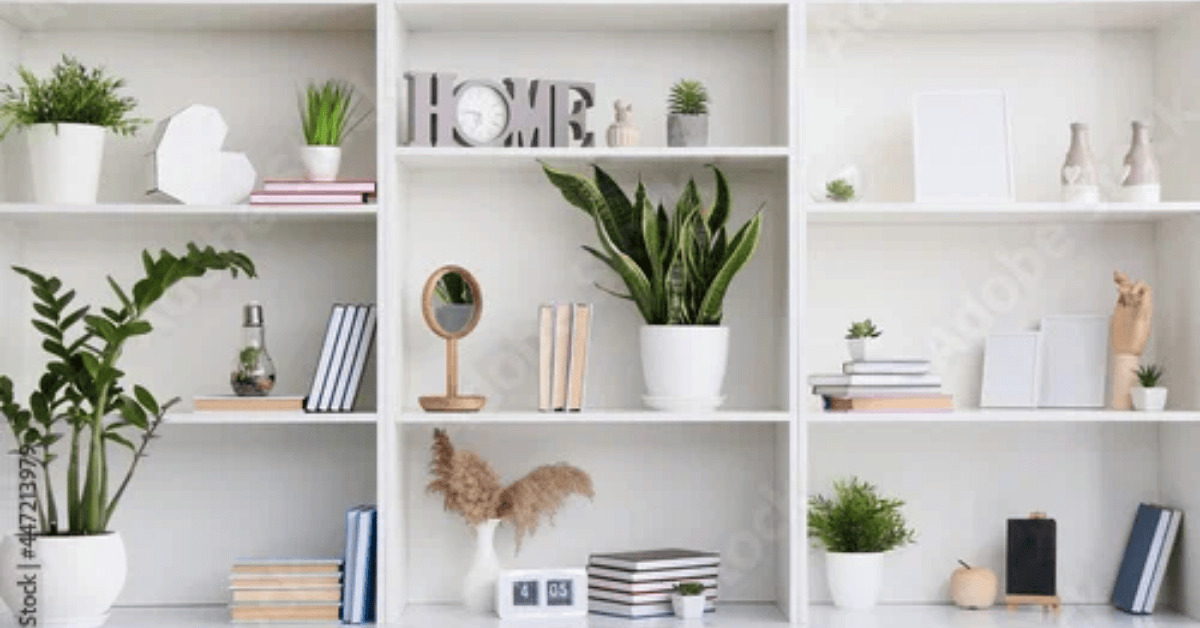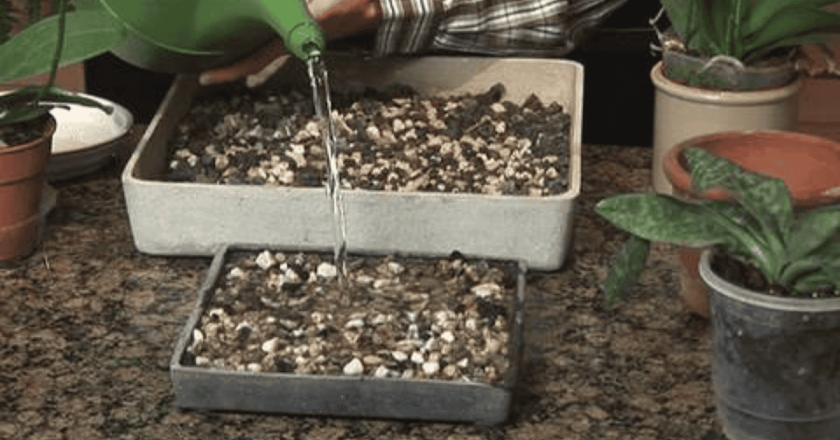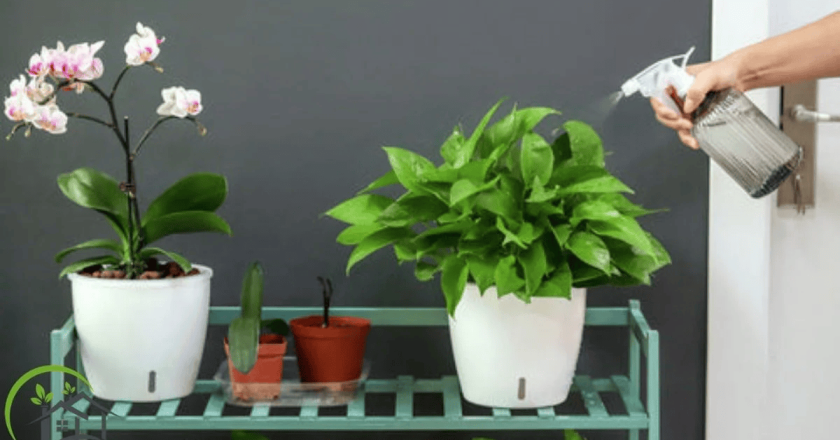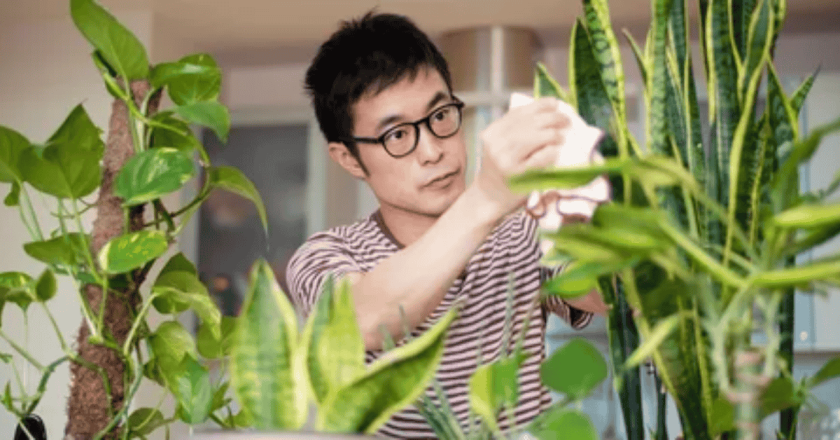There’s something oddly satisfying about a plant that doesn’t just sit there politely in a pot, but instead stretches, drapes, and spills over the edge of a shelf. Trailing plants have that sort of personality. They bring movement and softness into spaces that might otherwise feel too rigid. If you’ve ever placed books side by side on a bookcase and thought, “It looks neat but a bit… flat,” then you already know why a trailing vine can change everything.
I’ll admit — I didn’t think about trailing greenery much until I saw a friend’s living room. Her shelves weren’t expensive, just plain wood, stacked with a mix of novels and photo frames. But what made me stop and stare were the hanging plants, weaving down like living curtains. Suddenly the whole bookcase felt less like furniture and more like a story in itself. That’s the charm of Trailing Plants — they’re not just decorative plants, they’re atmosphere-builders.
Why Trailing Plants Work So Well on Shelves
Shelves and bookcases tend to be boxy. Straight lines, edges, rows of items in neat order. Functional, yes, but also predictable. When you add cascading plants into the mix, you interrupt that stiffness. Long vines drop down, leaves fan out, and suddenly there’s this beautiful contrast between order and nature’s natural messiness.
Trailing plants also add depth. Think of a bookcase without greenery: everything sits on a single visual plane. But when vines spill forward, they push into the room, breaking that flatness. The eye follows them downward — it’s almost like motion in a still picture.
Another small but important detail: shelves are often high up. Not all indoor plants look good perched above eye level, but trailing varieties thrive on height. They’re designed to show off when they dangle.
Popular Trailing Plants That Shine Indoors
Now, here’s where it gets tricky. There are dozens of choices. Some people gravitate toward hardy houseplants that can survive a bit of neglect (because, let’s be honest, we don’t always water on time). Others prefer more delicate aesthetic plants that require attention but reward you with lush, dramatic foliage.
Let’s go through some standouts.
1. Pothos (Epipremnum aureum)
Probably the king of trailing plants for beginners. Pothos is forgiving, grows quickly, and looks good almost anywhere. Its vines can get quite long, so on a tall bookcase you can let them cascade dramatically down several shelves.
2. String of Pearls (Senecio rowleyanus)
This one feels like jewelry for your shelves. Tiny bead-like leaves drape elegantly, perfect for minimalists who like unusual shapes. Admittedly, it can be fussy, but with the right light, it’s unbeatable.
3. English Ivy (Hedera helix)
Classic, almost old-fashioned in its charm. Ivy brings a storybook vibe — a touch of mystery when it climbs or trails across a bookcase. Just watch out: indoors, it wants light, or it sulks.
4. Heartleaf Philodendron
One of those indoor greenery staples that you’ll see in many stylish homes. Heart-shaped leaves spill down in a way that feels soft and romantic.
5. Spider Plant Offshoots
Not always thought of as trailing, but spider plants send out long arching stems with baby plantlets that look stunning when draped off a shelf edge.
Styling Shelves and Bookcases with Trailing Plants
It’s one thing to own these plants, another to actually style them. A single pot can look nice, but a few thoughtful arrangements make the whole display feel intentional.
For shelf décor, consider mixing trailing vines with upright decorative plants. For example, you might place a Snake Plant (and yes, if you need care tips, this guide has you covered) next to a trailing pothos. The upright leaves contrast beautifully with cascading ones.
Bookcases are trickier because you don’t want plants covering all your books. The trick is balance. Place a trailing plant on the top shelf, let it spill halfway down, but keep the rest neat so you can still reach your novels. Another option is to tuck smaller hanging plants in between stacked books, using them almost like punctuation marks for the eye.
Choosing the Right Spot
Not every plant will thrive in the same place. Some trailing vines love bright indirect light, while others tolerate shade. For example, Pothos is adaptable, making it perfect even for dim corners. But a String of Pearls? That one sulks in low light.
Think about what else is nearby, too. If your shelf sits in a bathroom, humidity can be your friend. (If you’re curious about plants that thrive in bathrooms, you might enjoy this list.)
In offices, on the other hand, where air is drier and lighting is inconsistent, sturdier options like Philodendron or ZZ trailing varieties work better. And if you’re looking for a full office greenery guide, this article is packed with ideas.
Caring for Trailing Plants
Watering is the most common challenge. Too much, and you risk rot; too little, and the leaves crisp. A good rule of thumb: let the top inch of soil dry before watering.
Don’t forget pruning. If your trailing plants start looking leggy, trim them back. It might feel harsh, but they bounce back stronger, and you can even propagate the cuttings into new pots.
And light… always light. Even “low-light” plants aren’t thrilled with pitch darkness. If your shelves are tucked in a gloomy corner, consider rotating your pots occasionally to give them a fair chance.
Pairing Trailing Plants with Other Houseplants
Here’s where plant styling becomes fun. Imagine a Peace Lily in the corner, its upright leaves and occasional white blooms bringing structure. Now picture a string of trailing vines weaving beside it. Together, they tell a story. If you want to learn more about caring for a Peace Lily, by the way, this detailed care guide is worth bookmarking.
Money Trees are another great companion. They have a sculptural trunk and broad leaves, but they can feel stiff on their own. Add trailing vines around the same shelf, and suddenly the Money Tree looks alive in a different way. For details, see this care guide.
Even seasonal choices like Christmas Cactus can work well near trailing greenery, especially since their blooms add bursts of colour. Need help with them? Here’s a Christmas Cactus guide.
Mixing Trailing Plants with Oversized Greenery
Sometimes, trailing vines look best when contrasted with something bold and oversized. A giant Monstera, for example, paired with thin, delicate ivy can make a dramatic scene. If oversized greenery excites you, you’ll love browsing through this list of 20 oversized indoor plants.
The same applies outdoors. While trailing vines are usually associated with indoor plants, they also shine in outdoor gardens, spilling over railings or pots. For outdoor inspiration, here’s a handy piece on low-maintenance plants for busy gardeners.
Keeping It Low-Maintenance
Not everyone wants high-effort care. Some of us like plants that simply do their thing while we go about our lives. The good news? Many trailing plants are low-maintenance. Pothos, Philodendron, even Ivy (once it’s settled) don’t ask for much.
If you’re keen on that low-effort lifestyle, check out this collection of 35 plants that thrive on minimal care. Many of them trail beautifully, making them perfect for shelves.
How Trailing Plants Change a Room’s Energy
There’s a subtle psychological impact to having greenery — especially vines — around you. Upright plants feel grounded, sturdy, protective. Trailing ones, though, feel freer, more dynamic. They soften sharp corners, blur boundaries, and create this sense of flow.
In small apartments, plants for bookcases can double as room dividers. A shelf unit lined with books and dripping with vines becomes a semi-wall, breaking up space without closing it off. For larger homes, they add intimacy, bringing down the scale of high ceilings.
And personally, I’ve found that trailing vines invite you to pause. You walk past them, and you can’t help but glance at how far they’ve grown. Sometimes you’ll even notice new tendrils stretching in directions you didn’t expect. It’s a quiet reminder that growth doesn’t always follow neat, straight lines.
🌿 Key Takeaways
-
Trailing plants bring softness and depth to shelves and bookcases, breaking up stiff lines with natural flow.
-
Variety matters — pair cascading vines with upright decorative plants for balance and visual interest.
-
Light and placement are crucial — some trailing vines tolerate shade, while others demand bright, indirect light.
-
Care is simple but consistent — pruning, watering moderately, and occasional rotation keep trailing greenery healthy.
-
They transform energy in a room — adding movement, intimacy, and a calming reminder of natural growth.
🌱 Final Thought
When it comes down to it, Trailing Plants are more than accessories. They’re companions that quietly shift how a space feels. A bare shelf can look complete the moment a vine starts to drape across its edge. It’s not about being perfect — some stems will grow wild, some leaves will drop, and sometimes you’ll forget to water. But maybe that’s the beauty of it. A trailing vine is like a living note-to-self: not everything has to stay inside the lines to be beautiful.
❓ FAQs
Q1. Which trailing plants are best for beginners?
Pothos and Heartleaf Philodendron are top choices. They’re forgiving, grow quickly, and adapt well to different indoor conditions.
Q2. Can trailing plants grow in low light?
Yes, some can. Pothos and certain Philodendron varieties tolerate low light, though growth may be slower. Others, like String of Pearls, need brighter spots.
Q3. How do I keep trailing vines from looking messy?
Prune regularly. Cutting back leggy stems encourages fuller growth. You can also train vines to loop or twine around parts of your shelf.
Q4. Are trailing plants safe for pets?
Not all. Some, like Pothos and Ivy, are toxic if ingested by cats or dogs. Always check plant safety before choosing.
Q5. Can I mix trailing plants with upright houseplants on the same shelf?
Absolutely. In fact, mixing trailing vines with upright greenery like Snake Plants or Peace Lilies creates stunning contrasts in height and texture.




